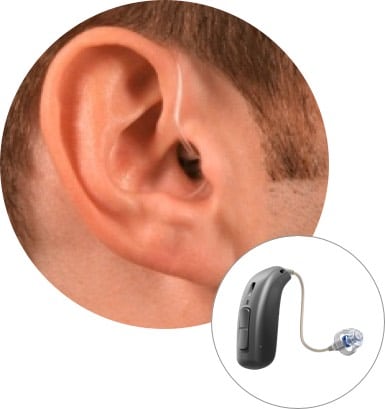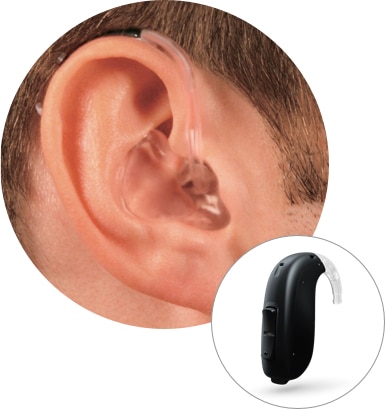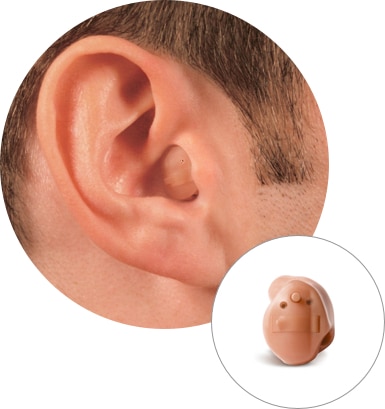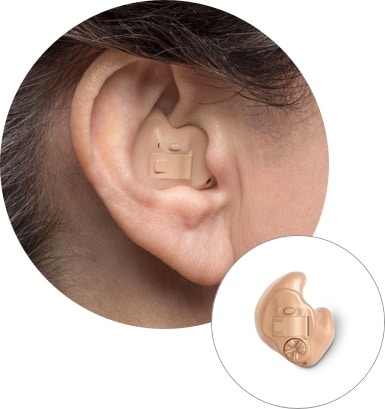Hearing Aid Styles
Hearing aids have improved greatly since the advent of digital technology. If you’re picturing big and bulky devices with questionable sound quality, you’ll be pleased to learn today’s instruments are smaller, more comfortable and provide sound that is more natural. They are available in a variety of sizes and styles, so finding one that appeals to your lifestyle needs and cosmetic preferences should be easy.
Here are the types available:

Receiver-in-the-Canal (RIC)
The most popular style of hearing aid (about 75 percent of users choose this type), a RIC hearing aid consists of a tiny housing containing all electronics except the receiver, which is positioned behind the ear. A thin wire connects the housing to the receiver, which is inserted into the ear canal. The receiver, also known as the “speaker,” actually produces the amplified sound, and there are several advantages to placing this component in the ear canal. It’s a small and discreet unit but powerful enough for treating all but the most severe hearing losses. Because of the popularity of the RIC style, manufacturers typically introduce their newest features in their RIC models first, and then later on in the other styles.

Behind-the-Ear (BTE)
BTE devices have largely been relegated to the sidelines because the RIC style has proven to be preferable for most adult patients. The difference between the styles is that in a traditional BTE, the receiver is contained within the housing and the sound is carried to the ear through a hollow acoustic tubing.
The acoustic tubing makes the BTE more visible than a RIC, but the BTE is still useful for those with very small or narrow ear canals use, and it remains the default choice for small children. It’s powerful enough for all types of hearing loss.

Completely-in-the-Canal (CIC)
This hearing aid is placed in the ear canal and is the smallest available. It takes advantage of the ear’s natural ability to collect sound, and its discreet size makes the device virtually invisible to others.
The trade-off is a shorter battery life, and it may prove difficult to adjust for those with poor manual dexterity. It’s not suitable for all types of hearing loss, and usually works best for those with a flat mild to moderate hearing loss.

In-the-Canal (ITC)
This style is also designed to fit in the ear canal, but not as deeply as a CIC device, resting securely in the lower portion instead. It’s a little larger, making it easier to insert and remove, which in turn allows for an extended battery life.
Like the CIC, it typically works best for patients with a flat mild to moderate hearing loss.

In-the-Ear (ITE)
This hearing aid is designed to fill the outer portion of the ear, and is larger than those worn in the ear canals. It is less discreet, but the size allows for more features and makes the unit easier to adjust.
A bigger battery translates to longer life and means those with severe or profound hearing loss can benefit from this style.
Call our office at (808) 262-6673 for more information or to schedule an appointment.